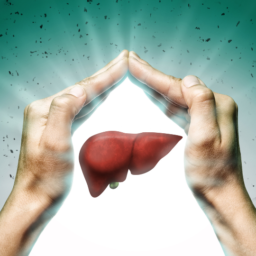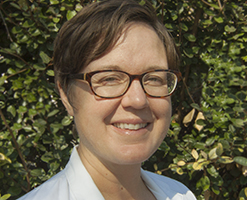 Fatty liver (steatohepatitis), from both alcoholic and bad dietary habits, is on the rise. Once classified as “benign,” the liver cysts found in Non-Alcoholic Fatty Liver Disease (NAFLD) are now being linked to the same deadly, end-stage cirrhosis as alcoholic and viral hepatitis. Globally, the rise in NAFLD is associated with a “westernized lifestyle”— sedentary and dense in caloric intake. (1)
Fatty liver (steatohepatitis), from both alcoholic and bad dietary habits, is on the rise. Once classified as “benign,” the liver cysts found in Non-Alcoholic Fatty Liver Disease (NAFLD) are now being linked to the same deadly, end-stage cirrhosis as alcoholic and viral hepatitis. Globally, the rise in NAFLD is associated with a “westernized lifestyle”— sedentary and dense in caloric intake. (1)
The Standard American Diet, sadly, is not a synonym for health. It includes lots of processed foods, preservatives, food additives, inflammatory foods, sugar, hydrogenated oils (trans fats), and strange chemicals, and is very poor in nutrient and fiber content. It is no wonder that heart disease has claimed the top cause of death in the US since 1921, despite successful anti-smoking and drinking campaigns. The main risk factor for heart disease just shifted from smoking to fast food. (2)
Both alcohol and junk food consumption affect lipid metabolism by slowing the enzyme pathway for fat oxidation, stimulating lipogenesis (depositing fat). If the liver can’t get rid of it, it has to store it. The liver tissue shifts toward fat storing rather than fat burning. (3)
No distinct lab values currently exist for overt diagnosis of fatty liver. However, on a complete metabolic panel (CMP), the AST (aspartate aminotransferase) and ALT (alanine aminotransferase) may be elevated. These are enzyme pathways that suggest inflammation in the liver, so they can be associated with other conditions, example – ALT may even be elevated in a heart attack. On a lipid panel, elevated triglycerides and LDL (bad cholesterol) as well as low HDL (good cholesterol) may be added clues. An ultrasound of the liver can observe the cysts, but a liver biopsy is still the definitive method of diagnosis for patients with fatty liver. (4)
So, how do you undo this? First, change your diet. If you have a fatty liver, you can’t fix it if you eat fast food and continue with alcohol. That is the honest truth and coming to terms with that is your best path forward.
Foods the liver loves:
- Anything green – broccoli, kale, arugula, brussel sprouts, spinach, chard, mustard greens, dandelion greens, fresh herbs. These all have chlorophyll, antioxidants, and enzymes that assist the liver with detoxification.
- Foods rich in good fat – All fats are not bad. This was such a misguided idea and now we know that essential fatty acids are vital to your brain and liver. (5) Eating fats does not cause fatty liver. Actually, eating too many carbs, inflammatory foods, and weird chemicals causes fatty liver. In fact, if there is one food that is most responsible for fatty liver, it would be high-fructose corn syrup. (6) Examples of foods rich in good fats: avocado, salmon, sardines, mackerel, tuna, olives and olive oil, walnuts and walnut oil.
Foods the liver hates:
- Sugar – High-fructose corn syrup, fructose, sucrose, and glucose. A study done on 126 healthy males revealed that eating moderate amounts of sugar daily (defined as 60 grams per day) increased lipogenesis and hepatic fat content (fatty liver). (7) I will say it again: if there is one sweetener you should eliminate from your life forever, it’s high-fructose corn syrup. Used because it is cheaper than plain sugar, high-fructose corn syrup is the central ingredient in almost all soft drinks, candy, and even fruit juice. Do you drink lactose-free milk? Usually the lactose is replaced with high-fructose corn syrup! Cognitive decline, insulin resistance, obesity, and liver disease all have been directly linked to high-fructose corn syrup. (8)
- Alcohol – Moderate alcohol is defined as drinking 1 beverage per day for women and 2 for men. (9) However, it is unclear how these figures were determined in the first place. When considering actual health parameters, how much alcohol is safe to consume for the liver? None. Alcohol, in any amount, is always toxic for the liver, kidneys, pancreas, and digestive system. Rather than figuring out how many drinks per week you can have, the better ratio is to assess how many weeks per drink.
- Chemicals – Preservatives, dyes, and hydrogenated oils. Your body simply just doesn’t really know what to do with these. Think of it this way: If the food has an unusually long shelf life, strange bright color, or is labeled “sugar-free” but is actually quite sweet, it is a chemical tornado. These chemicals pose the same oxidative stress on the liver as alcohol and high-fructose corn syrup. (10)
Supplements – Diet change, while vital to healing fatty liver, cannot be the sole dynamic. Supplements are a must. Alpha-GPC (Glysphosphoryl Choline) is absolutely essential to clearing fatty liver. (11) Choline is a vitamin-like nutrient used for lipid metabolism and neurotransmitter creation. Genetic mutations within the PEMT (Phosphatidylethanolamine N-Methyltransferase – the main pathway to choline genesis) can contribute to a choline deficiency. Determining a choline deficiency in the body is hard to do, however genetic tests exist for the PEMT pathway through basic nutritional genetic profiles (available at any Functional Medical Doctor’s office).
Milk Thistle (active ingredient silymarin) is a well-known herb used to reduce inflammation and improve liver cell repair and function. A study done in 2013 on 72 individuals with NAFLD showed significant reduction of fatty liver after 3 months of silymarin and diet changes. The results on echography showed improved liver tissue. Labs showed improved AST and ALT. After 6 months of the same treatment, subjects continued to show the same improvement. Researchers concluded, “silymarin appears to be effective to reduce the biochemical, inflammatory, and ultrasonic indices of hepatic steatosis.” (12)
The time has come when we must start thinking about high-fructose corn syrup, excessive sugar, hydrogenated and trans fats, and chemicals in food as highly damaging; the same way we think about smoking and drinking. Even if the food is cheap, the long-term damage it causes to the liver will cost you more in the long run, and may even cost you the ultimate price—a shorter, more painful life. Know that fatty liver damage can be healed, but it takes a commitment to change. Much like seeing a lung cancer patient smoking, eating poorly when you have a fatty liver is illogical when you regard it from a cause-and-effect perspective. If you have been diagnosed with a fatty liver, I implore you to resist succumbing to an “I’m broken” mentality. You are strong, you are capable, and I know you can change this. If you need further guidance, please visit any PeoplesRx.
If you have comments and/or questions about this blog, email us at blog@peoplesrx.com.

Amy Nelson, ND* received her Naturopathic Doctorate from the National College of Natural Medicine in Portland, OR where she studied nutrition, homeopathy, herbal and functional medicine. In addition, Dr. Nelson was the Associate at The IBS Treatment Center in Santa Monica where she treated irritable bowel syndrome and complex food allergies. Dr. Nelson utilizes her experience in natural medicine to address female and male hormonal imbalances, mental health, and digestive disorders. Amy is available for consultation at Peoples Lakeline.
*Although licensed in other states, Naturopathic Doctors are not currently licensed in Texas.
References:
- Mitra S, De A, Chowdhury A. Epidemiology of non-alcoholic and alcoholic fatty liver diseases. Transl Gastroenterol Hepatol. 2020 Apr 5;5:16. doi: 10.21037/tgh.2019.09.08. PMID: 32258520; PMCID: PMC7063528.
- Bains A, Rashid MA. Junk food and heart disease: the missing tooth. J R Soc Med. 2013 Dec;106(12):472-3. doi: 10.1177/0141076813512297. PMID: 24284994; PMCID: PMC3842860.
- Rasineni K, Casey CA. Molecular mechanism of alcoholic fatty liver. Indian J Pharmacol. 2012 May;44(3):299-303. doi: 10.4103/0253-7613.96297. PMID: 22701235; PMCID: PMC3371448.
- Vilar-Gomez E, Chalasani N. Non-invasive assessment of non-alcoholic fatty liver disease: Clinical prediction rules and blood-based biomarkers. J Hepatol. 2018 Feb;68(2):305-315.
- DiNicolantonio JJ, O’Keefe JH. The Importance of Marine Omega-3s for Brain Development and the Prevention and Treatment of Behavior, Mood, and Other Brain Disorders. Nutrients. 2020 Aug 4;12(8):2333. doi: 10.3390/nu12082333. PMID: 32759851; PMCID: PMC7468918.
- Fructose stimulated de novo lipogenesis is promoted by inflammation. Todoric J, Di Caro G, Reibe S, Henstridge DC, Green CR, Vrbanac A, Ceteci F, Conche C, McNulty R, Shalapour S, Taniguchi K, Meikle PJ, Watrous JD, Moranchel R, Najhawan M, Jain M, Liu X, Kisseleva T, Diaz-Meco MT, Moscat J, Knight R, Greten FR, Lau LF, Metallo CM, Febbraio MA, Karin M.Todoric J, et al. Nat Metab. 2020 Aug 24. doi: 10.1038/s42255-020-0261-2. Online ahead of print. PMID: 32839596.
- https://www.journal-of-hepatology.eu/article/S0168-8278(21)00161-6/fulltext
- https://www.uclahealth.org/news/fructose-alters-hundreds-of-brain-genes-which-can-lead-to-a-wide-range-of-diseases
- https://www.mayoclinic.org/healthy-lifestyle/nutrition-and-healthy-eating/in-depth/alcohol/art-20044551#:~:text=Moderate%20alcohol%20use%20for%20healthy,5%20fluid%20ounces%20(148%20milliliters)
- Golonka R, Yeoh BS, Vijay-Kumar M. Dietary Additives and Supplements Revisited: The Fewer, the Safer for Liver and Gut Health. Curr Pharmacol Rep. 2019;5(4):303-316. doi: 10.1007/s40495-019-00187-4. Epub 2019 Jun 10. PMID: 32864300; PMCID: PMC7453625.
- Jill L Sherriff, Therese A O’Sullivan, Catherine Properzi, Josephine-Lee Oddo, Leon A Adams, Choline, Its Potential Role in Nonalcoholic Fatty Liver Disease, and the Case for Human and Bacterial Genes, Advances in Nutrition, Volume 7, Issue 1, January 2016, Pages 5–13, https://doi.org/10.3945/an.114.007955
- Cacciapuoti F, Scognamiglio A, Palumbo R, Forte R, Cacciapuoti F. Silymarin in non alcoholic fatty liver disease. World J Hepatol. 2013 Mar 27;5(3):109-13. doi: 10.4254/wjh.v5.i3.109. PMID: 23556042; PMCID: PMC3612568.
